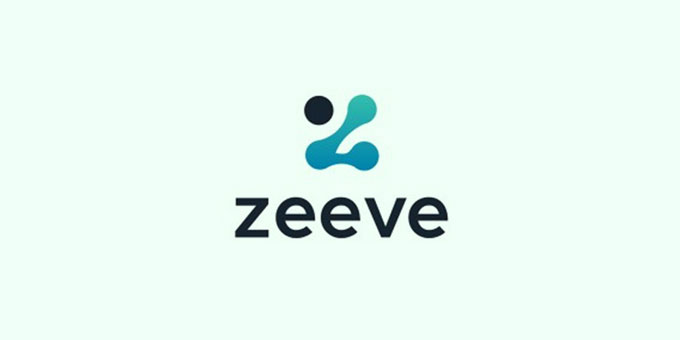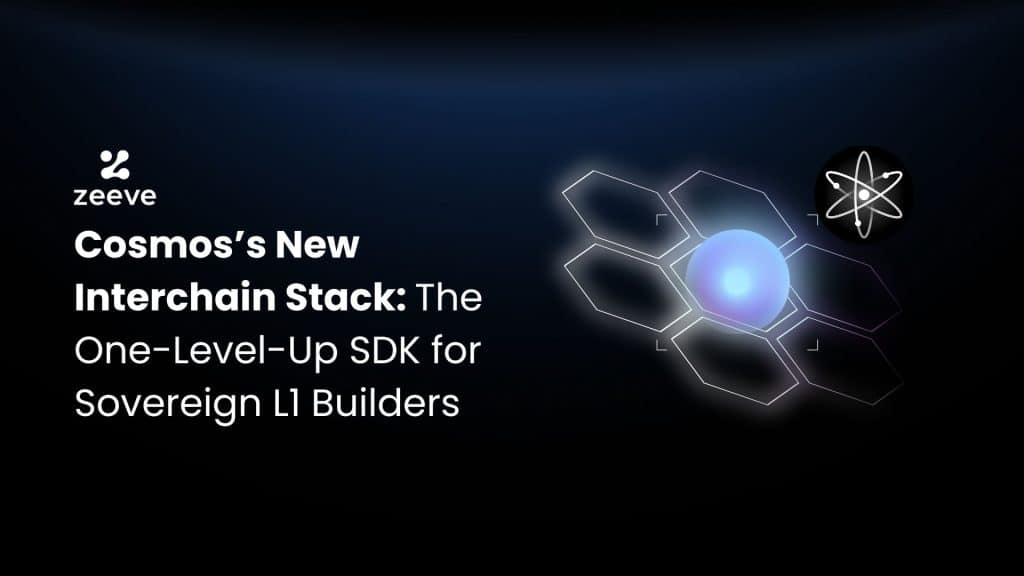When you have understood the market loopholes and created a solution for the same and it becomes an industry standard, restricting it to a single ecosystem is no choice when a flurry of adoption is getting triggered. The Cosmos story is almost the same. To cater to its 110 ecosystem chains and counting, Cosmos is committed to transition its vision from a single chain composability and interoperability protocol to a multi-chain world with a more simple SDK. In this regard, the old Cosmos SDK must evolve and the new Cosmos Interchain stack is the evolution that was demanded.
What is The New Cosmos Interchain Stack?
Simply put, Cosmos’ Interchain Stack is more than the three I’s that all other technology stacks offer:
- Integrity,
- Intentionality, and
- Interoperability.
What’s more in here: A new narrative: the MCI narrative. Where so far most of the blockchains have provided M & I standing for modularity and interoperability but composability is something that the New Cosmos Interchain Stack delivers to build a one ecosystem for all the blockchains clubbed together that its erstwhile Cosmos SDK somewhat missed to achieve.
What Was The Challenges with Cosmos SDK v1
Semi Modularity
If you have been developing on top of the erstwhile Cosmos SDK Stack, you would have stumbled across one key constraint. There are endless customization capabilities on the Cosmos Stack but within only the Cosmos SDK-based blockchain. What I mean is, if you are trying to modify the Cosmos stack as per your varying needs, in that case, there’s a threshold limit that you cannot breach.
With that being said, if you say that Cosmos’ old stack is completely modular and interoperable, in that case, it would ideally be a half baked truth. On the contrary, the old stack is more of a semi-modu-monolith, meaning customization within a specific threshold and if you break the line, you have to manage all the operations of your forked blockchains. Which means, it is a very expensive deal in the first place for developers.
BaseApp Complexity
One of the key constraints of BaseApp is that as the users’ demand grows, it complicates the management. Why? Because the Base App maintains two states: (i) Volatile and (ii) Main State. So, the applications have to unnecessarily store a lot of data which can simply bloat the ecosystem. Thereby, significantly raising the cost.
Change in Positioning
Cosmos was fundamentally the best in class industry standard for interoperability. However, over the period, it was realized that limiting the same to a single ecosystem isn’t justified after assessing its efficacies. Hence, the need was to extend the benefits to beyond the Cosmos ecosystem, wherein more than 110+ chains and counting can further amplify their ecosystem and make the most from the same.
Is the Interchain stack only an SDK upgrade and rebranding? Or, is it a shift in the narrative
Categorically speaking, the Cosmos Interchain Stack is a mix of both the changing narrative of the Cosmos ecosystem and a technological upgrade as a whole.
Breaking Free from the Cosmos-Only View:
Earlier the emphasis was more on attracting other projects to the Cosmos ecosystem; however, at present, Cosmos is more inclined towards giving all applications the freedom to choose their own environment but still enjoy all the benefits of the Cosmos ecosystem. As a result, in 2023, Composable Finance launched the first IBC connecting Polkadot and Kusama because the narrative had changed from only Cosmos to Cosmos and beyond.
Breaking the composability and interoperability Conundrum
In the past, when we spoke of composability and interoperability, it dwelled on a single ecosystem. However, the new Cosmos Interchain Stack has challenged the same through its technological upgrade where you need not have to have a trusted third party to help connect with a different ecosystem. On top of the same, the consensus engine and security should be such that it can aid in billions of dollars of exchange across multi-chain without any risk involved.
CosmWasm As a One Broad Compiler
Previously, it was implied that if you have a different programming language than the chain that you wish to target and operate upon, in that case, it is not possible due to the inability to understand the environment of the non native chain. However, the present Cosmos Interchain stack has completely challenged that narrative. Now, the developers have the discretion to write their smart-contracts in any language and still use the Cosmos ecosystem as their execution environment and enjoy all the trade-offs of the ecosystem.
What V2 Is Adding To the Former Cosmos SDK To Make These Narratives A Reality?
Cross-ecosystem compatibility
By now, you have understood that BaseApp and the semi-modu-monolithic interface wouldn’t let the Cosmos SDK proliferate because no ecosystem would be willing to compromise on their own terms and conditions while using an ecosystem to upgrade their capability. Because, in the end, the reason they want to switch to a new ecosystem is to inherit its advantages and not to get sucked out of their identities at the hands of a new ecosystem. The new Cosmos’ Interchain stack guarantees the same through an upgraded IBC
IBC New Chain Support Via CLI
IBC now introduces a new Command-Line-interface. CLI allows developers to customize a new module without having to change a single line of code. Due to this, the developers using the Cosmos Interchain stack SDK can scaffold modules, messages, CRUD operations, IBC packets, and more, expediting the development of complex functionalities. So, even if some functionalities are not allowed in a specific blockchain environment, through the CLI, the developers can start and test their new nodes deployed without any hassles without even forking their chain and initiative value transfer.
At the same time, initiate an interchain communication with other blockchains using the IBC relayer and the CometBFT engine that allows developers to optimize the consensus. For example, in the past, there were limitations with respect to the consensus while using the ABCI as we have already discussed above with respect to the BaseApp. However, the CLI allows the developers to completely abstract the same now. Now, through the CosmJS, any non native chain can sign and broadcast the transaction through the use of libraries like Cosmos Kit, Telescope, Interchain UI, and Chain Registry. These libraries help developers dynamically develop and access new functionalities without having to be restricted by the chain specific functions.
COSM-WASM for Multi Language Deployment
Another key barrier is how can you let any application that is developed on top of a distinct blockchain like Polkadot, Kusama, Solana, Polygon and Avalanche connect with the Dapps built on top of the Cosmos ecosystem. That’s where the COSM-WASM works like magic. The COSM-WASM standardizes libraries in a manner that even if two distinct blockchains are working with different languages, yet they can communicate and become easily interoperable.
Source: Cosmwasm
As you can see in the image above, a simple API is being used to communicate with other chains and interact. In this regard, the IBC does the work of compilation and translation so that any blockchain, irrespective of the language that they use can easily come and build on top of the Cosmos ecosystem using the Interchain Stack without having to compromise their sovereignty, transparency and security.
Ethermint developers are doing the same through the Cosmos Interchain Stack where they are able to port the EVM into the Cosmos module without even changing a single line of code. They are doing this to enjoy the leverage of having a very highly scalable, TPS based blockchain with optimum security and customization required to scale their applications.
That’s why more than 115 blockchain networks are eagerly connected to the IBC Network and these numbers are going to shoot up sooner post the Cosmos Interchain Stack because these blockchains can optimize consensus through CBFT and at the same time, remain sovereign, modular and secure in the process through the V2 upgrade.
STF/ Server Separation
V2 is scraping the dependency on BaseApp, as a result, developers can do much more now on the Cosmos Interchain Stack. How? Because, the erstwhile baseApp, which was the connecting layer interface for other blockchains has been scrapped with a new model: (i) STF (ii) Server separation. Now, due to this feature, if you need any specific modification like a custom transaction, which was impossible earlier on the SDK stack or even on other L1s, that’s been immortalized in the new Cosmos Interchain Stack through the V2 upgrade.
Where, the developers have the freedom to push the consensus outside of the execution environment and use the state machines/L1s for settlements. Rollkit has been already doing the same and with such leverage, it would ideally be a possibility for any developer to tweak with anything on the server like customizing the transaction types or work with any other API technology that can help them connect to different ecosystems.
.

Source: Cosmos SDK
Build your Cosmos Chain With Zeeve
So, if you are building a sovereign L1 chain on Cosmos, you need to build all the layers like ; application, consensus, and network —- with the relevant Cosmos New Interchain network stack. For this, you need to add various components to your L1 chai, such as wallets, explorers, faucets, validators, CLIs, and more. While you can manage all these requirements on your own, it comes with a great deal of challenges and technical complexities.
However, Zeeve is there to simplify all of that so that you can have a wonderful sovereign L1 builder experience. . For your further queries, you can connect with our blockchain consultants or schedule a one-on-one call with our experts.






















